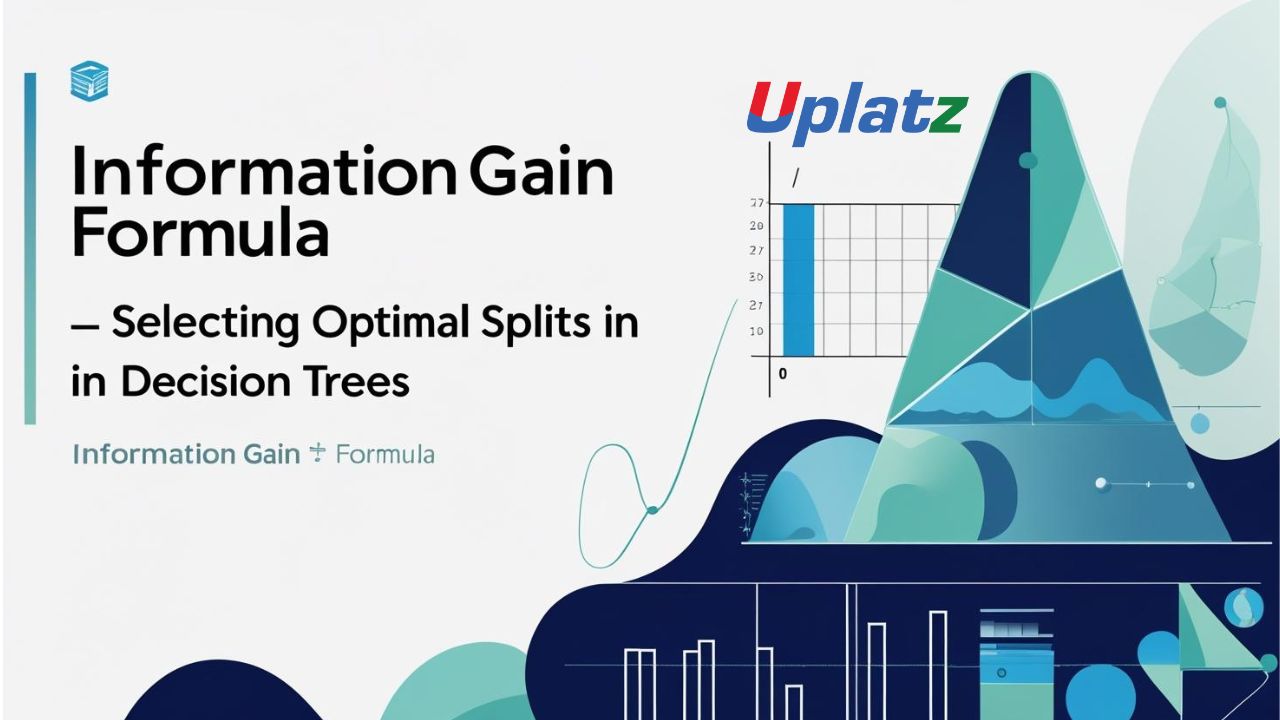 🔹 Short Description:
🔹 Short Description:
Information Gain quantifies the reduction in uncertainty achieved by splitting a dataset based on an attribute. It’s widely used in decision tree algorithms like ID3 and C4.5 to select the best features for splitting nodes.
🔹 Description (Plain Text):
Information Gain (IG) is a critical concept in machine learning, especially in supervised classification problems that use decision trees. It measures how much “information” a feature gives us about the class label. More precisely, it calculates the decrease in entropy after a dataset is split based on a particular attribute.
In simple terms, the higher the information gain, the more a feature helps in reducing the uncertainty (or impurity) of the outcome. This makes it a fundamental component of tree-based models such as ID3, C4.5, and Random Forests.
📐 Formula
Information Gain = Entropy(Parent Node) − Weighted Sum of Entropy(Child Nodes)
Mathematically:
IG(T, A) = H(T) − Σ [(|Tᵥ| / |T|) * H(Tᵥ)]
Where:
- IG(T, A) is the information gain from attribute A on dataset T
- H(T) is the entropy of the original dataset
- Tᵥ is a subset of T for which attribute A has value v
- |Tᵥ| / |T| is the proportion of examples in subset Tᵥ
- H(Tᵥ) is the entropy of that subset
🧪 Example
Let’s say we’re building a decision tree to predict whether someone will buy a product (Yes/No) based on “Age”:
- Suppose the original entropy H(T) of the dataset is 0.94
- We try splitting on the “Age” feature, and get subsets with entropies:
- H(T₁) = 0.5 (20% of data)
- H(T₂) = 0.7 (50% of data)
- H(T₃) = 0.9 (30% of data)
The weighted average entropy after the split:
= (0.2 × 0.5) + (0.5 × 0.7) + (0.3 × 0.9) = 0.1 + 0.35 + 0.27 = 0.72
Then,
Information Gain = 0.94 – 0.72 = 0.22
So, splitting on “Age” reduces our uncertainty by 0.22 bits.
🧠 Why Information Gain Matters
- Prioritizes meaningful features: Attributes that split the dataset into purer groups are selected first.
- Forms the backbone of tree construction: Determines which node to grow and in what order.
- Efficient for classification: Especially when classes are well separated by feature values.
In decision tree algorithms like ID3, the attribute with the highest information gain is chosen to split the dataset at each node.
📊 Real-World Applications
- Decision Tree Algorithms (ID3, C4.5)
At each node, the algorithm picks the feature with the highest information gain for the best split. - Feature Selection
Helps reduce dimensionality by keeping features that offer the most predictive power. - Text Classification & NLP
Information gain is used to identify the most informative words in documents. - Genomics and Bioinformatics
Detects which genes contribute most to a classification (e.g., disease/no disease). - Recommender Systems
Attributes with higher IG help better personalize content. - Customer Segmentation
Marketers use IG to isolate the best features to target specific customer groups.
🔄 Information Gain vs. Gini Index
While both Information Gain and Gini Index are used to evaluate splits in decision trees:
- IG is based on entropy and is more mathematically rigorous.
- Gini is computationally simpler and used in CART.
- Information Gain can favor features with more levels, which may lead to overfitting. To fix this, Gain Ratio is often used (as in C4.5).
⚠️ Limitations
- Bias toward many-valued attributes: Features with many distinct values can show high information gain just by overfitting.
- Computationally more expensive than Gini due to log calculations.
- Requires entropy calculation at every node and split.
Despite these limitations, information gain remains one of the most interpretable and reliable metrics for evaluating the quality of data splits.
🧩 Summary
- Formula: IG = Entropy(parent) – Weighted Entropy(children)
- Purpose: Measures reduction in uncertainty after splitting
- Best For: Decision trees, feature selection, classification
- Key Insight: More information gain = better attribute for splitting
By choosing features that maximize information gain, you’re ensuring that each split in your decision tree reduces impurity and improves model performance.
🔹 Meta Title:
Information Gain Formula – Maximize Predictive Power in Decision Trees
🔹 Meta Description:
Learn the Information Gain formula used in decision tree algorithms like ID3 and C4.5. Understand how it selects features by reducing entropy and improving prediction accuracy.
